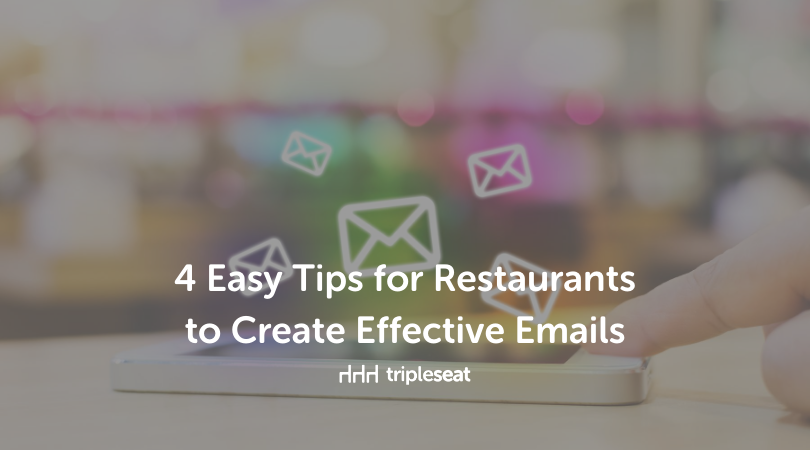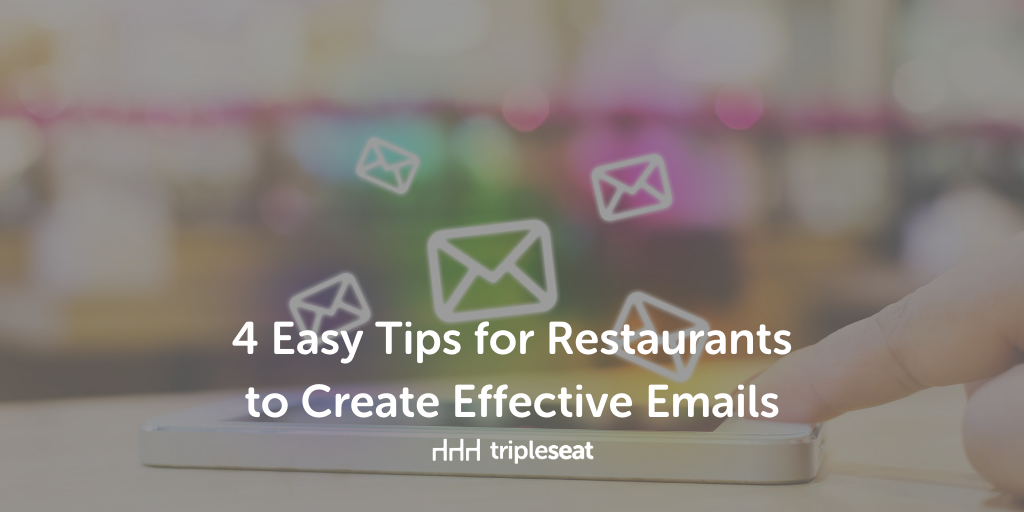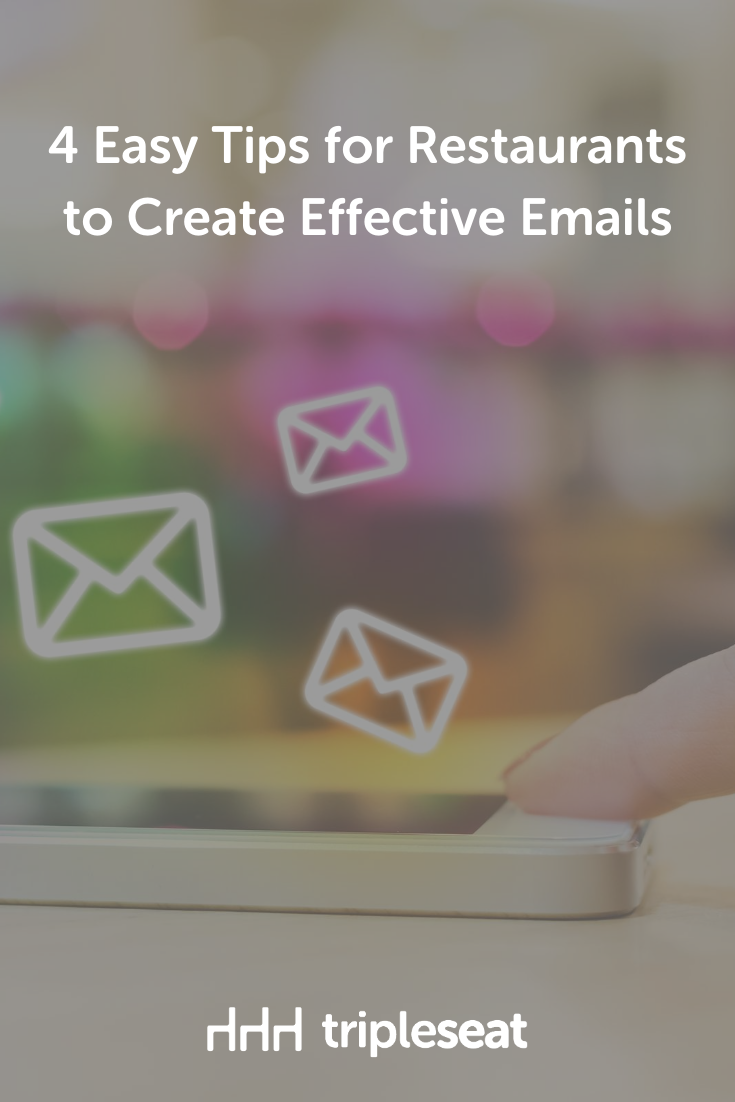4 Easy Tips for Restaurants to Create Effective Emails
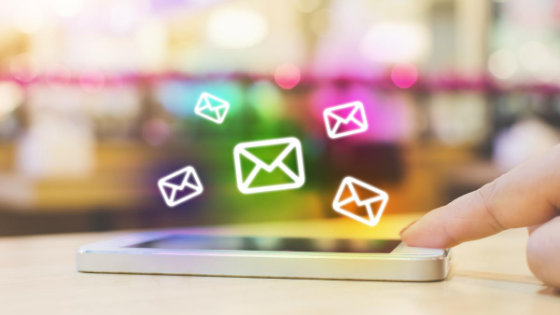
Email marketing is one of the top four ways that restaurants can drive new or repeat business, and it’s become even more important as a way to reach customers during the COVID pandemic.
Here are four easy tips your restaurant can use to create marketing emails that will help you book more events and drive more business:
1. Write an interesting subject line
The subject line is one of the first things email recipients notice in their inbox and it needs to capture their attention. A subject line like August Newsletter is boring and it doesn’t tell your customers what’s in the email and why they should read it.
Try these ideas when crafting your email subject lines:
- Use urgent words and phrases like last call, act now, book now – this shows customers that they need to open your email and take action right away or they’ll miss out on something they want.
- Use action words like book, reserve, RSVP, try, eat, or taste to give your readers an idea of what they can do with the information in your email.
- Numbers will make people stop and look when they see them in an email subject line. This works for emails that have a list of information or tips. Example: 5 New Menu Items You’ll Want to Order.
- Talk about the offers you’re sharing in the email. Customers are always looking for discounts, something new, and anything that benefits them or makes their lives easier.
- Try keywords that your customers are interested in. These could have something to do with the type of food you serve – like comfort food, Italian, seafood, or cocktails. You could include keywords about your activities such as live music, trivia night, or virtual cooking class. And you should try words that describe your event packages – weddings, holiday parties, or cocktail party.
- Make your subject lines short, and at least 50 characters or less. Anything longer will get cut off on a mobile device and your message will get lost.
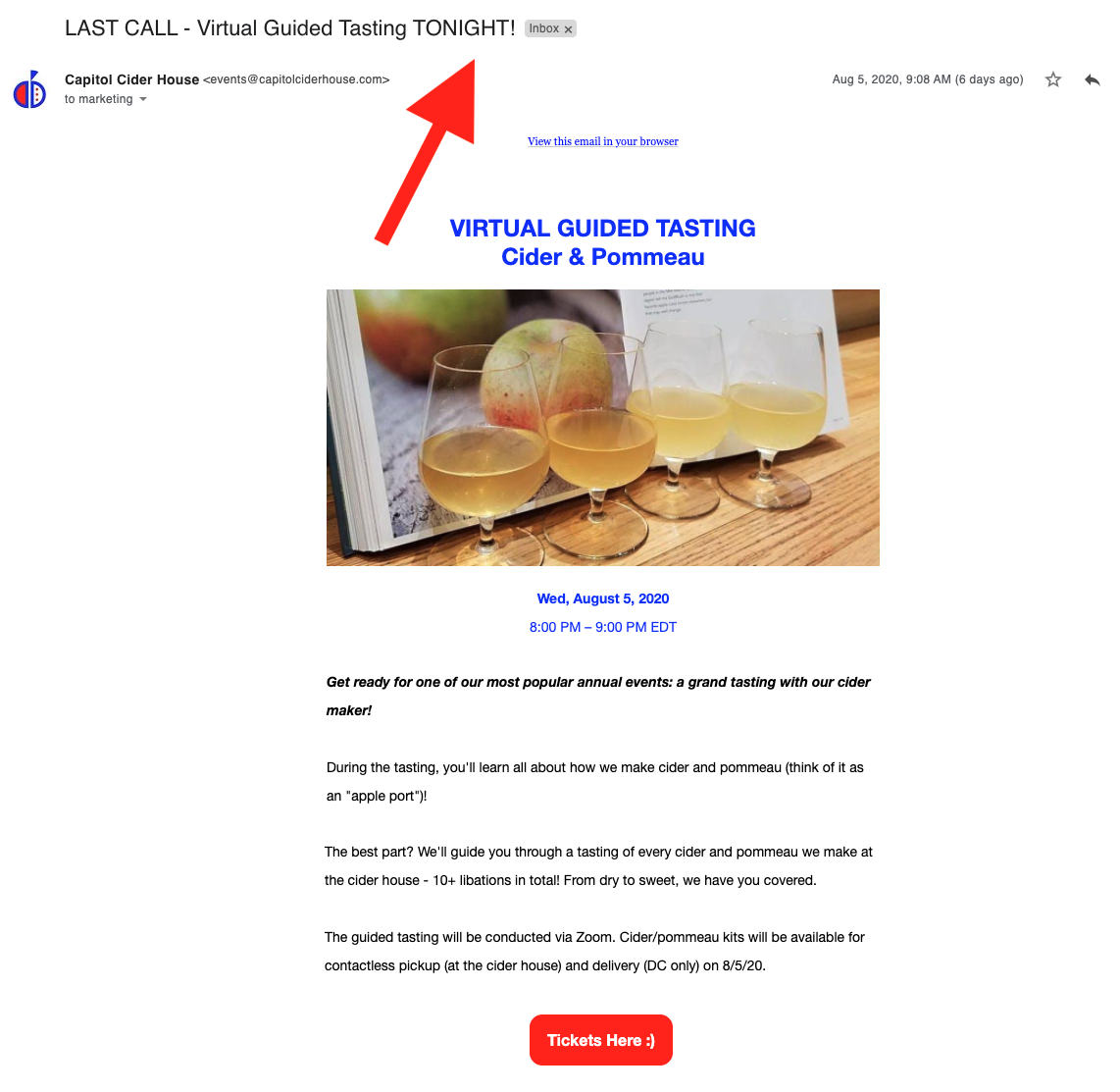
This email from Capitol Cider House in Washington, D.C., has a great example of an interesting subject line: LAST CALL – Virtual Guided Tasting TONIGHT! It’s urgent, it tells customers what’s waiting for them in the email, and it’s less than 50 characters long.
2. Always include a call to action
The point of sending a marketing email to your customers is to get them to do something: Go to your website, book an event, come to the restaurant to try something on the menu, or anything that will drive more revenue back to your business.
Don’t miss the opportunity to make something happen. You need to add a call to action to all of your emails. Most of the time, it will be a button that links to the action you need them to take, but don’t be afraid to include that same link in the text as well.
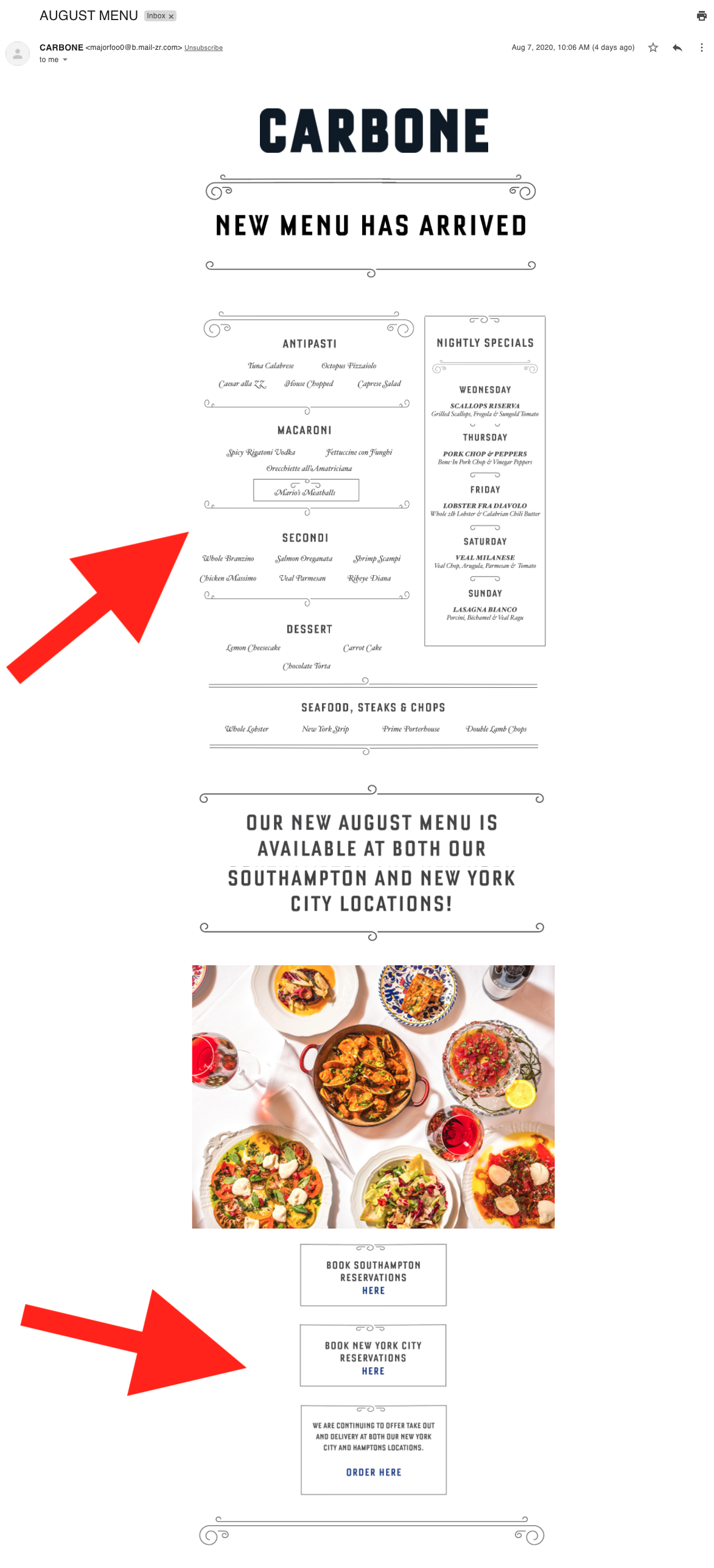
This email from Carbone in New York City shares their newest menu and includes calls to action to book a reservation at one of their locations, as well as a link to order delivery.
3. Keep your email content short
Your customers aren’t going to scroll through a long email. People don’t have a long enough attention span to read blocks of text whether they’re on their phone or a laptop. Stick to your logo, an image, a paragraph of information, and a call to action.
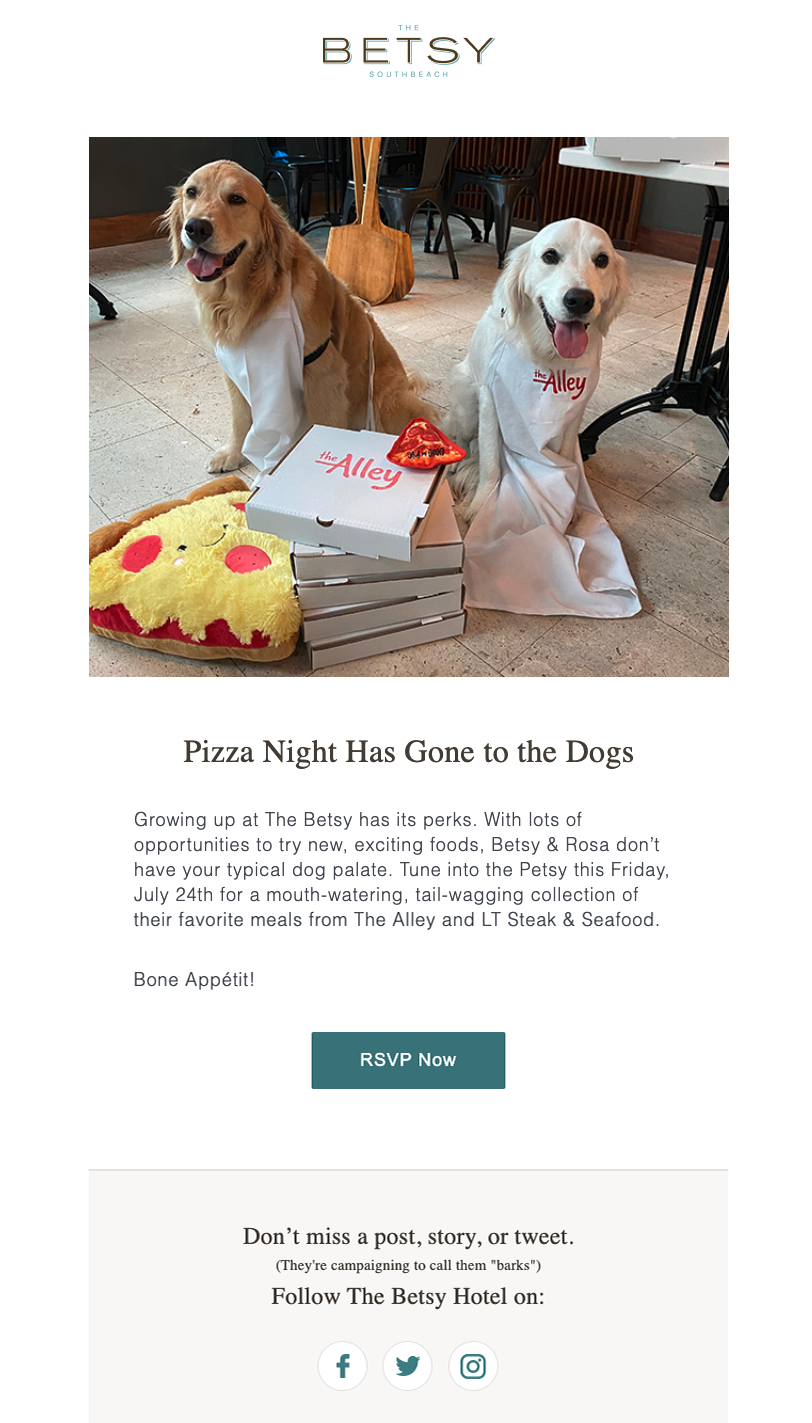
The Betsy hotel in Miami does a great job with this formula in this email promoting their pizza night, which is a virtual event that shows off food from the hotel’s restaurants, The Alley and LT Steak & Seafood. They have an adorable photo of their Canine Executive Officers Betsy and Rosa, a paragraph about their upcoming event, and a button that links to a Facebook event where you can RSVP.
4. Create content that benefits your customers
No matter what marketing content you’re creating, make sure that is has something that appeals to your customers. Ask yourself “Why should my customers care?” Yes, you need to promote your restaurant but make sure you’re including language about why your email topic would matter to your customers.
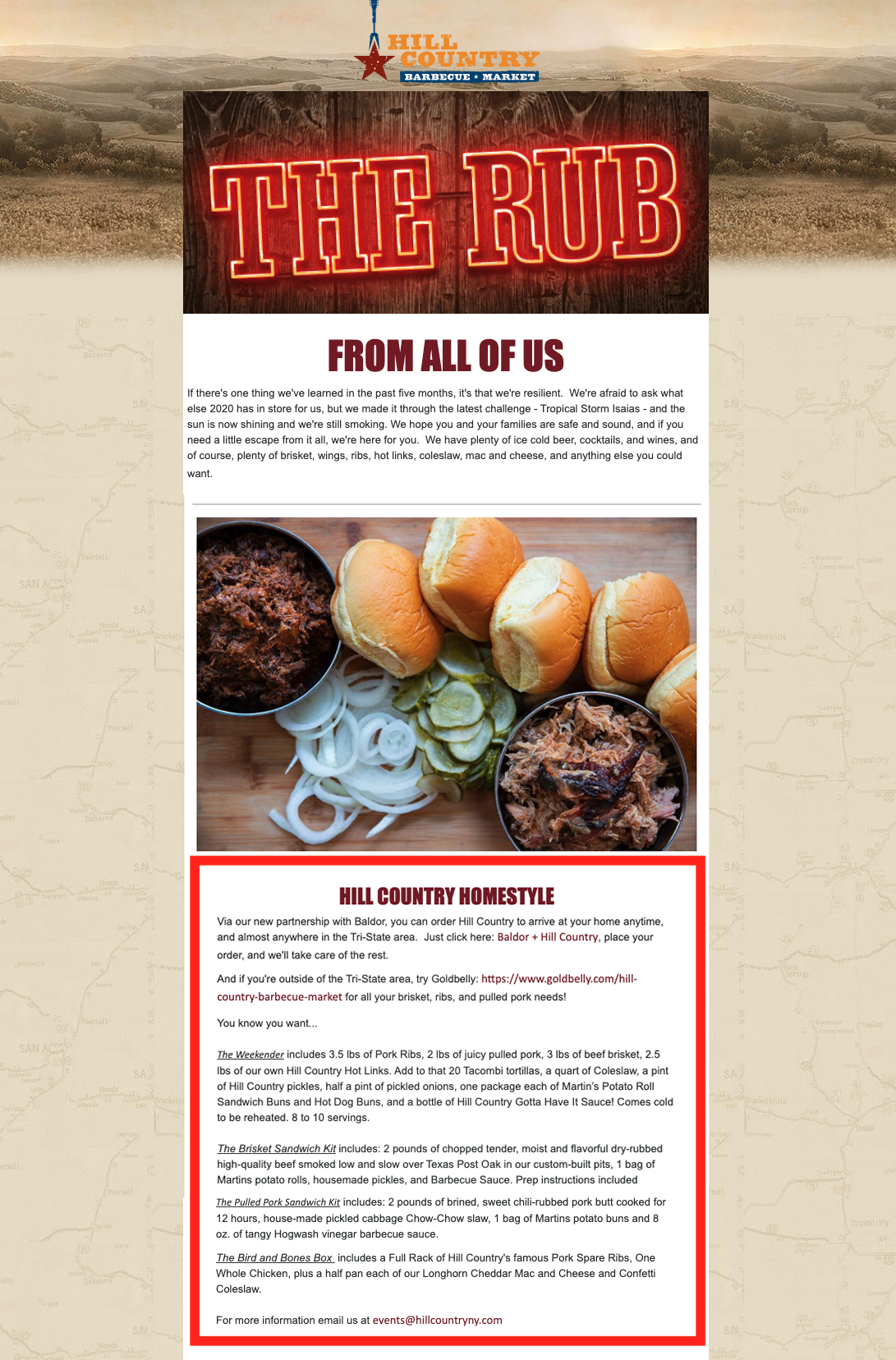
This Hill Country Barbecue Market email promotes the restaurant’s delivery service, but they also include information about why customers should care about it – it’s easy to order with the link in the email, the customers choose the delivery times and dates so their package arrives exactly when they want it, and they have four different options to appeal to their customers’ specific needs.
Pull your list, choose an email service provider, and get started
If you’re a Tripleseat customer, follow these steps to use Tripleseat as a Customer Relationship Management tool (CRM) by pulling a list of email addresses from your Tripleseat database to target with email marketing.
Next, check out our Marketplace to find an email service provider that fits your marketing needs. We partner with Constant Contact, Fishbowl, and Mailchimp – it’s easy to upload your Tripleseat email list to any of these providers.
Then, use these four tips to create a great email that will stand out and help you drive more revenue for the rest of 2020.
If you’re not a Tripleseat customer and you’re interested in learning more about Tripleseat’s CRM features, schedule a demo at your convenience to take a closer look.
